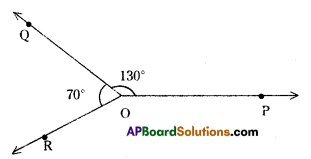AP State Syllabus AP Board 7th Class Maths Solutions Chapter 4 Lines and Angles InText Questions and Answers.
AP State Syllabus 7th Class Maths Solutions 4th Lesson Lines and Angles InText Questions
![]()
Try This
Question 1.
How many transversals can be drawn for two distinct lines? (Page No.77)
Solution:
Infinite number of transversals can be drawn for two distinct lines.
DoThis:
Question 1.
Identify the transversal in figure (1) and (ii). Identify the exterior and interior angles and fill the table given below. (Page No. 78)

Solution:
| Figure | Transversal | Exterior angles | Interior angles |
| i) | n | ∠a, ∠b, ∠g, ∠h | ∠c, ∠d, ∠e, ∠f |
| ii) | r | ∠1, ∠4, ∠5, ∠8 | ∠2, ∠3, ∠6, ∠7 |
![]()
Question 2.
Consider the following lines. Which line ¡s a transversal. Number and list all the angles formed. Which are the exterior angles and which are the interior angles (Page No.79)
Solution:
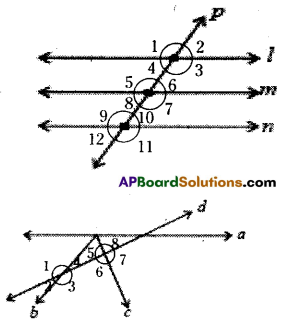
For fig. (i) P is transversal for l, m and n.
∠3, ∠4, ∠5, ∠6 are interior angles for l, m.
∠7, ∠8, ∠9, ∠10 are Interior angles for m, n.
∠1, ∠2, ∠7, ∠8 are exterior angles for l, m.
∠1, ∠2, ∠11, ∠12 are exterior angles for l, n.
for fig (ii),
line d is transversal for pair of lines b and c.
∠3, ∠4, ∠5, ∠6 are interior angles.
∠1, ∠2, ∠7, ∠8 are exterior angles.
Do This
Question 1.
Name the pairs of angles in each figure by their property. (Page no. 80)
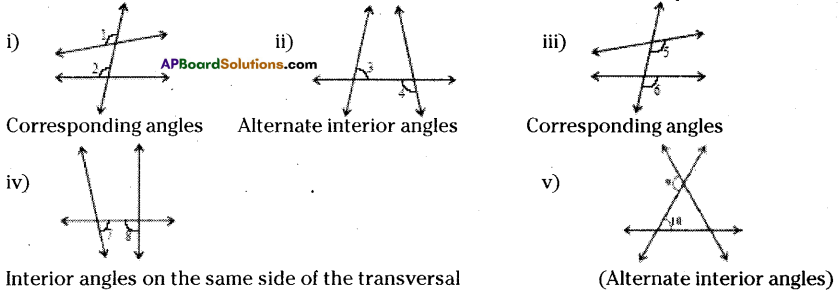
![]()
Question 2.
Fill the table with the measures of the corresponding angles. (Page no. 83)


1. Find out in which figure the pairs of corresponding angles are equal
Answer:
In fig. (I) pairs of corresponding angles are equal. q
2. What can you say about the lines ‘1’ and ‘m’?
Answer:
l is parallel to m, fig (ii)
3. What can you say about the lines ‘p’ and ‘q’?
Answer:
In fig. (ii) pairs of corresponding angles are not equal and hence p is not parallel to q.
4. Which pair of lines are parallel?
Answer:
L and M are parallel.
Fill the table with the measures of the interior alternate angles. (Page no. 84)
Table – 2
| Fig | Pairs of interior alternate angles | |
| 1st pair | 2nd pair | |
| i) | ∠3 = 105° | ∠4 = 75° |
| ∠5 = 105° | ∠6 = 75° | |
| ii) | ∠3 = 115° | ∠4 = 65° |
| ∠5 = 105° | ∠6 = 75° | |
1. Find out in which the pair of interior ¿ ternate angles are equal?
Answer:
In fig (i) the pairs of alternate interior angles are equal.
2. What can you say about lines ‘L’ and ‘M’?
Answer:
L||m.
3. What can you say about the lines ‘p’ and ‘q’?
Answer:
In fig (ii) the pair of alternate interior angles are not equal. Therefore p ∦ q
Try This
Question 1.
Write any five pairs of supplementary angles of your choice. (Page no 72)
Solution:
(80°, 100°), (60°, 120°), (108°, 72°) (140°, 40°). 30°, 150°)
![]()
Try This
Question 1.
Draw five pairs of complementary angles of your choice. (Page no. 71)
Solution:
The following are the pairs of complementary angles

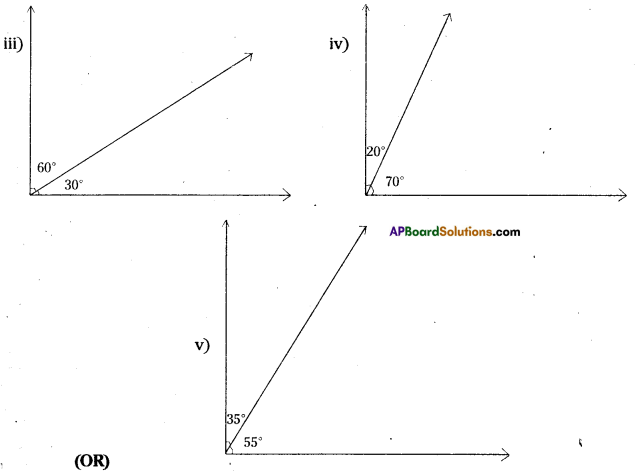
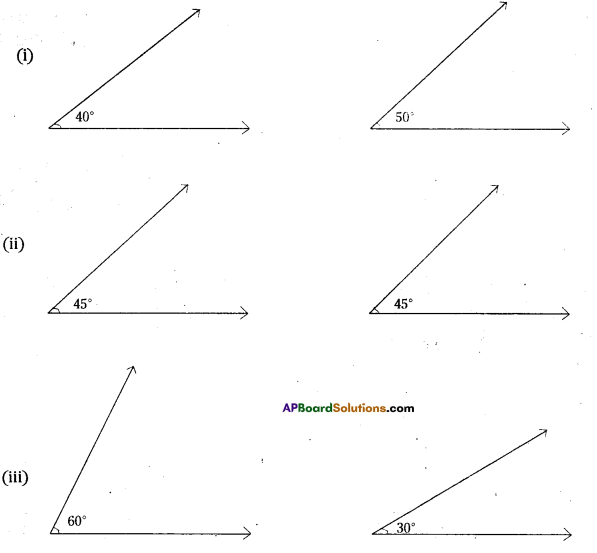
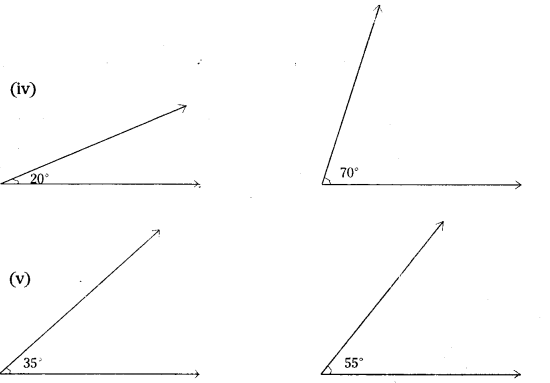
Do This
Question 1.
Draw an angle ∠AOB = 40°. With the same vertex 0’ draw ∠BOC = 50°, taking \(\overrightarrow{\mathbf{O B}}\) Initial ray as shown In the figure. Since the sum of these angles Is 90°, they together form a right angle. Take another pair 60° and 50° and join in the same way. Do they form complementary angles? Why? Why not? (Page No. 71)
Solution:
∠AOB = 40°, ∠BOC = 50°
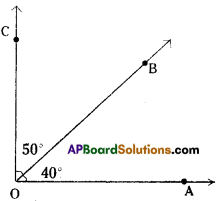
∠POQ = 60°
∠QOR = 50°
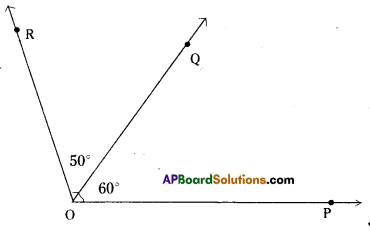
These two do not form pair of complementary angles since their sum is 60° + 50° = 110° ≠ 90°
Question 2.
Draw an angle ∠AOB = 100° with the same vertex O, draw ∠BOC = 80° such that \(\overline{\mathrm{OB}}\) is common to two angles. (Page No. 72)
Solution:
∠AOB = 100°
∠BOC = 80°
∠AOB +∠BOC = 180°
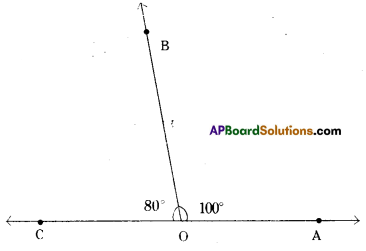
![]()
Question 3.
Are 130° and 70° supplementary angles? Why? Why not?
∠POQ = 130°, ∠QOR = 70°
∠POQ + ∠QOR = 130° + 70° = 200° ≠ 180°
Hence they are not supplementary angles.
